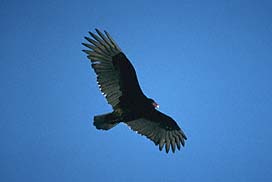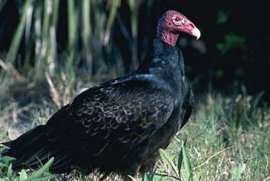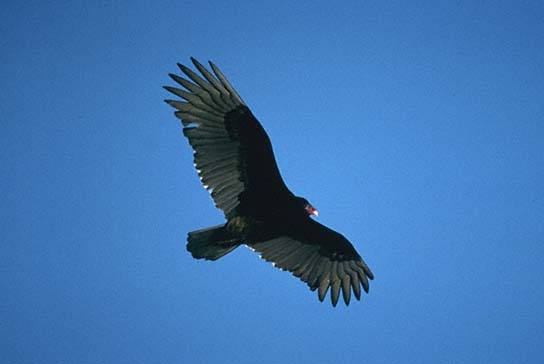Hawk-like Birds
Description
25-32" (64-81 cm). W. 6' (1.8 m). Eagle-sized blackish bird, usually seen soaring over the countryside. In flight, the long wings are held upward in a wide, shallow V; flight feathers silvery below. Tail long; head small, bare, and reddish; gray in immatures. Similar to Black Vulture, but wings narrower; flaps wings less frequently and rolls and sways from side to side.
Voice
Usually silent; hisses or grunts when feeding or at nest.
Range
Breeds from southern British Columbia, central Saskatchewan, Great Lakes, and New Hampshire southward. Winters in Southwest, and in East northward to southern New England.
Discussion
The most common and widespread of the New World vultures, this species nests throughout all of the United States except northern New England. Soaring for hours over woodland and nearby open country, the Turkey Vulture searches for carcasses, locating them at least partly by means of its acute sense of smell. As they soar, these "buzzards" ride on rising columns of warm air called thermals to save energy as they cover miles of territory. The importance of this energy saving is clear from the fact that we seldom see a Turkey Vulture on a windless day, when thermals do not form. Turkey Vultures are valuable for their removal of garbage and disease-causing carrion. At night they often gather in large roosts.




